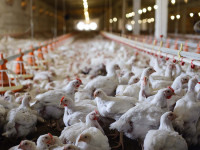Money
Cardamom farmers store crops awaiting price rise
Transactions in the cardamom market have slowed as growers have been holding on to their harvest following a sharp fall in prices due to low overseas demand.
Chandra Karki
Transactions in the cardamom market have slowed as growers have been holding on to their harvest following a sharp fall in prices due to low overseas demand.
The farm gate price of the spice has plunged 60 percent to Rs1,375 per kg from Rs2,750 during the same period last year.
Farmers are not willing to sell their harvests and have been storing them due to expectations that prices will rise in the future, traders said. The drop in prices has worried farmers because production costs have swelled.
“Farmers have been making repeated visits to the market and inquiring about prices. They don’t bring their crops with them,” said Bir Bahadur Subbha, a local trader at Basantapur. “They have been storing their crops hoping that prices will increase soon.”
Satrudhan Chaudhary, another trader in Birtamod, Jhapa said that market transactions had slowed during the key season. The high-value spice is exported to India and other countries through Birtamod in the Eastern Region.
“The market had not recovered as of mid-October,” he said, adding that the trade volume had plunged 50 percent this year. “Farmers who had earned good incomes from large cardamom last year are disappointed this year,” said Hom Rayamajhi, a local trader at Chitre Bazaar. “Even traders are worried as the market has dried up.”
A drop in overseas demand has coincided with a rise in output this year, according to the District Agriculture Development Office. Last year, markets like Basantapur, Lasune, Jirikhimti, Sukrabare and Morahang used to see daily transactions of Rs700 million each.
“I don’t think we will get the kind of prices that we were offered last year,” said Hem Kumar Tamang, a local farmer of Tamafok in Sankhuwasabha.
Rajendra Sah, a trader in Dharan, said that fluctuations in the price of large cardamom in the international market had also affected the local market. Large cardamom is commercially produced on more than 770 hectares in the district, said the agriculture office. Terhathum alone exported large cardamom worth Rs520 million last year.
Nearly 90 percent of the large cardamom grown in Nepal is exported to India. From India, the spice is re-exported to Bangladesh, Pakistan, the Gulf countries and other overseas destinations.
The high-value cash crop is produced mainly in the eastern hills in Nepal. Outside Nepal, the spice is grown only in Sikkim and Darjeeling in India and Bhutan. Large cardamom was introduced into Ilam from Sikkim in 1865.
Nepal is the largest producer of large cardamom, accounting for 68 percent of the international market. It is followed by India and Bhutan. Ilam, Panchthar, Taplejung, Sankhuwasabha, Terhathum, Bhojpur and Dhankuta districts are the major large cardamom producing areas in Nepal. Cultivation of the spice has now spread to more than 38 districts. Taplejung is the top producer with an annual output of 2,400 tonnes worth Rs6 billion.
Large cardamom is one of the major contributors to Nepal’s foreign exchange earnings. According to government statistics, Nepal exported large cardamom valued at Rs4.61 billion in the last fiscal year. In the previous fiscal year 2014-15, shipments totalled Rs3.83 billion.




 9.12°C Kathmandu
9.12°C Kathmandu













%20(1).jpg&w=300&height=200)
